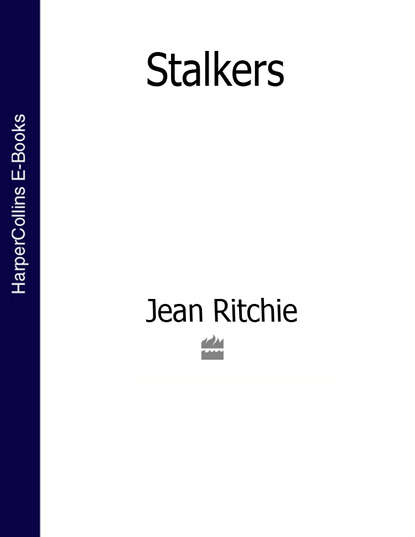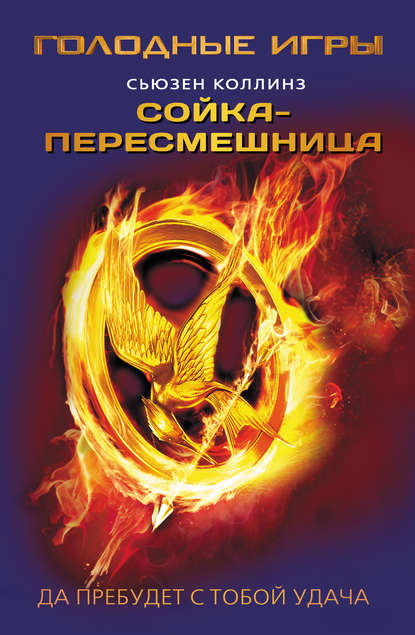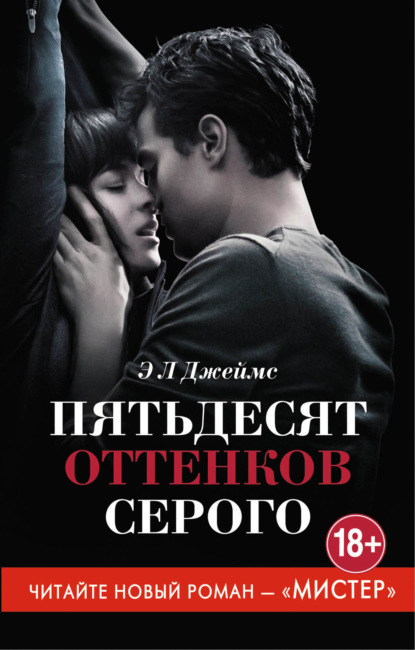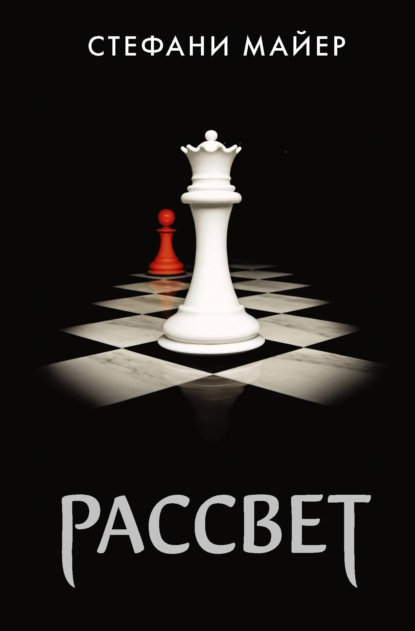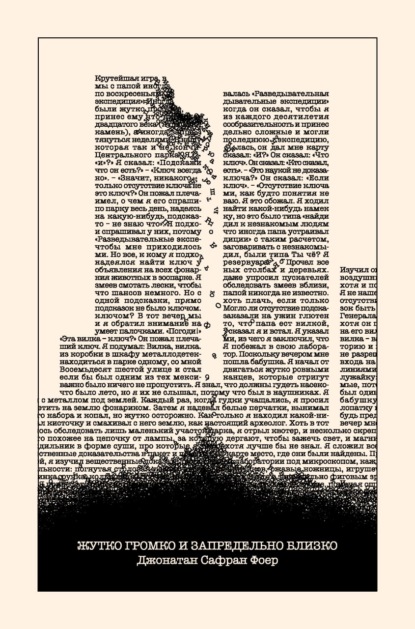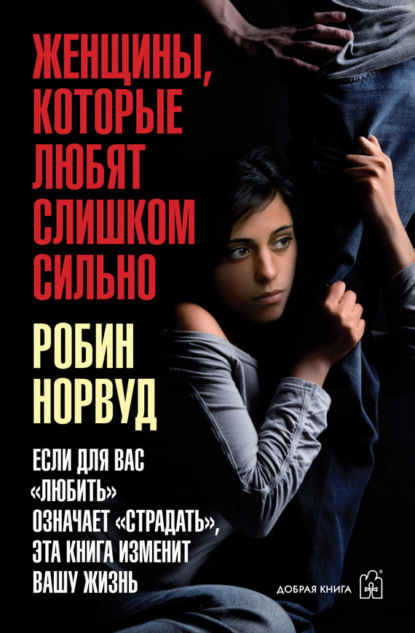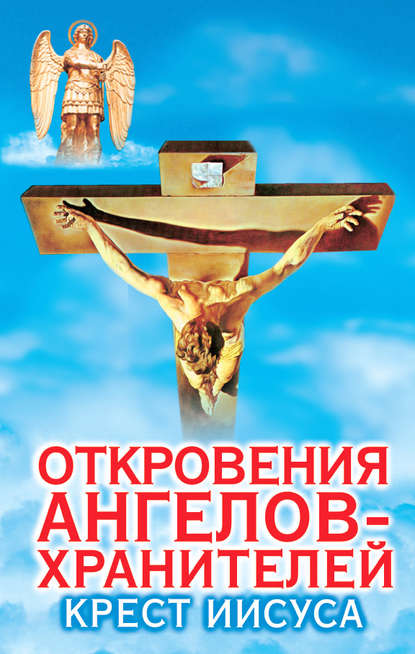
Текст
отзывы: 0 | рейтинг: 0
Полная версия
Полная версия
Inside the Supernatural
Jean Ritchie
Out of body? Out of mind? Reality or unreality?All of us have experienced the inexplicable, have known elements of the unknown. but is there really anybody out there? What is the evidence to support the theory of life after death, telepathy or psychokinesis? Do scientists believe in crisis visions, ghosts and mediums? Is there a rational explanation for even the most mysterious of ghostly apparitions?INSIDE THE SUPERNATURAL takes nothing for granted, neither believes nor disbelieves; it is quite simply the most comprehensive and readable analysis of the evidence for and against. containing a riveting account of the latest scientific evidence and research – and the latest case histories – it is compelling reading for anyone with an interest in the supernatural.
Copyright (#ulink_f976b6de-0b8d-5689-8a91-cec0ec313ded)
Fourth Estate
An imprint of HarperCollinsPublishers,
1 London Bridge Street
London SE1 9GF
www.haprercollins.co.uk (http://www.harpercollins.co.uk/)
A Fontana Original 1992
Copyright © Jean Ritchie 1992
Jean Ritchie asserts the moral right to be identified as the author of this work
A catalogue record for this book is available from the British Library
Pictures by Emma Cattell
All rights reserved under International and Pan-American Copyright Conventions. By payment of the required fees, you have been granted the nonexclusive, nontransferable right to access and read the text of this e-book on-screen. No part of this text may be reproduced, transmitted, downloaded, decompiled, reverse-engineered, or stored in or introduced into any information storage and retrieval system, in any form or by any means, whether electronic or mechanical, now known or hereafter invented, without the express written permission of HarperCollins e-books.
HarperCollinsPublishers has made every reasonable effort to ensure that any picture content and written content in this ebook has been included or removed in accordance with the contractual and technological constraints in operation at the time of publication.
Source ISBN: 9780006378099
Ebook Edition © MAY 2016 ISBN: 9780008192082
Version: 2016-05-12
Contents
Cover (#u25900454-ef92-5b8c-ab29-e3d85851398d)
Title Page (#ub48bae7f-18f8-56de-89f8-5328ab30edf0)
Copyright (#ulink_160e6482-1797-5999-868e-9f51a75e3f78)
Introduction (#ulink_13f3ba01-31d3-54bb-b5dc-07a833dc14c4)
1 The Search Begins (#ulink_9e76a35f-6686-5153-8097-27551e752797)
2 Things That Go Bump in the Night (#ulink_f0c94028-3772-5351-9a53-74889fa6612c)
3 Examining the Evidence (#litres_trial_promo)
4 Out of Body, Out of Mind (#litres_trial_promo)
5 The Undiscovered Country (#litres_trial_promo)
6 Quantum Leap (#litres_trial_promo)
7 The Unbelievers (#litres_trial_promo)
8 Pay-offs (#litres_trial_promo)
Index (#litres_trial_promo)
About the Author (#litres_trial_promo)
About the Publisher (#litres_trial_promo)
Introduction (#ulink_eb8744f0-43ff-555c-8dc6-53af173ecbb0)
Tell anyone that you are researching a book about the paranormal and they will tell you an anecdote from their own life or one from the experiences of their family and friends. It may be something fairly insignificant: a dream that came true; a strange feeling of a ghostly presence; a clock that, in the words of the song ‘stopped, dead, never to go again, when the old man died’. Or it may be a full-scale haunting with clanking chains, footsteps and headless nuns; a disruptive poltergeist that hurled objects around; a vision of a dying relative many miles away.
The majority of people believe in the supernatural. Sixty per cent believe it is possible to communicate telepathically; fifty-nine per cent believe that some houses are haunted; fifty-nine per cent believe it is possible to dream the future; forty-five per cent believe in reincarnation and thirty per cent believe that we can receive messages from the dead (statistics from a poll carried out for Channel Four in 1987). The word ‘believe’ implies that they have faith in the fact that these things are possible. What this book attempts to do is find out what factual basis there is for their belief.
An anecdotal story, the sort everyone seems to be able to tell about things that go bump in the night, has no scientific worth. It cannot be investigated, bottled, analysed or dissected. It’s like Samuel Goldwyn’s verbal contract: not worth the paper it’s written on. Yet over the many months I was researching this book I came to realize that the sum of all this experience has to be worth something. If every family has within its culture a story of this kind, the sheer volume and universality of the material must amount to a matter of substance. Sure, the sceptics will say that man has demonstrated his need for mystery and that supernatural stories cater for this need. But there are easier ways to inject mystery into life: religion, for a start. The paranormal is a subject that invites scorn: many of the people who have confided their personal experiences to me have done so diffidently, and in confidence: ‘I’ve never told anyone this before in case they thought I was mad,’ is a fairly common fear.
This is not a book about the assorted unconfirmed experiences of all these people. But it is a book for them because it is a book which attempts to explain, in lay person’s language, just what is happening in the serious pursuit of the paranormal.
Are we any nearer today to understanding what ghosts are? What causes poltergeists? Why some people come back from mediums feeling that they have been in close commune with their dead loved ones – and others feel that they have been ripped off? Is there such a thing as telepathy – and, if so, why can’t we harness it and use it?
Research into the paranormal is regarded with some suspicion by the scientific establishment. One eminent American parapsychologist recently estimated that there are no more than fifty scientists worldwide involved in investigating the supernatural on a full-time basis. Fortunately, to counterbalance this, there are some brilliant part-time investigators (several of them, coincidentally, highly-regarded scientists in their own fields) who give their free time and energy to the subject.
Serious psychical research began here in Britain more than a hundred years ago. Although America hhas thrown more money at the subject over the past fifty years, international researchers still look to Britain for good examples of ghost stories: this is the most haunted country in the world.
It is shortsighted of the scientific community to turn its back on psychical research. In terms of world history, it is not long since we all believed that the earth was flat, that the sun revolved around the earth and condemned as lunatics people who talked of stones falling from the heavens (meteorites). We have learned that these beliefs were wrong.
It takes only the quickest glimpse (which is what this book gives you) into the astonishing discoveries of the ‘new’ physics to realize that there are, indeed, more things in heaven and earth than are dreamt of in our philosophy. If you can get your brain around ideas of relativity and quantum mechanics – which are now scientifically accepted and verified – how very much easier to foresee the day when extra sensory perception is fully and completely explained. We are no more qualified to reject the possibility of that day coming than we were qualified 500 hundred years ago to call the man who was hit on the head by a meteorite a lunatic.
I have a confession to make. I started research on this book as a dyed-in-the-wool sceptic. I did not believe in the paranormal. I finished writing the book from a different personal perspective. I still maintain a very healthy scepticism about a great deal of so-called ‘evidence’, but I am now convinced that there are many unexplained and fascinating happenings that do not fit into the regular framework of human life, events that can only be encompassed within the definition of paranormal.
I have been greatly helped in researching this book by many experts, whose brains I have picked unashamedly, and to whom the finished product will no doubt appear superficial. To them I quote Oscar Wilde: ‘To be intelligible is to be found out.’ I didn’t set out to further their expertise; I set out to explain to beginners, like myself, just what a vast and fascinating subject this is. I am more concerned with being intelligible than with being found out.
To give you a taste of what the paranormal is all about, let me quote just one of the stories I was told by an acquaintance when she discovered I was writing a book on the subject.
* * *
Dr Betty Cay is an intelligent, well-educated and eminently sensible grandmother, the widow of a GP, and a retired historical geographer in her seventies. As well as spending her days looking after her two grandchildren while her daughter works, she researches and writes local history books, concentrating on areas of her home town, Edinburgh.
Early in 1991 she was trying to put together a book on Saughton, in south-west Edinburgh, and she was running up against a big brick wall. She could not find any information on one crucial small area. She knew that a certain house, known as Sauchton Cottage, was the key to this area. The house, not an impressive manse but an artisan’s dwelling, had been the first to be built in the area, at some time during the eighteenth century. The history of the house and the land that originally surrounded it was fundamental to the history of the development of the area.
‘Because I was looking after the children and running a home for the family, I measured the amount of time I had for research in the odd couple of hours I could squeeze in each day. I was very keen to get on with the book, but I was completely held up by the lack of information I had about this house.
‘I could trace its history back to the latter part of the nineteenth century, but I knew that it went back another hundred years or more and I had no clue as to who had owned it or what land was entailed to it then. If it had been a big, important house, no doubt records would have been kept. But I could find nothing on it.
‘The present occupant of the house was as helpful as possible, and arranged for me to visit his solicitor to see the deeds of the property. But I was told by both him and the solicitor that the paperwork only went back to the start of the twentieth century and I had already got most of that information from other sources.
‘Nevertheless, I went along. The lawyer gave me an empty room to work in and presented me with a typical bundle of legal documents, tied around with red ribbon. On the top was an inventory of all the documents in the pile. I started to work my way through them, taking notes as I went. The papers were in chronological order.
‘Astonishingly, as I progressed, I turned over a document and found underneath it one that dated back to the very beginning of the house in the eighteenth century. It gave the name of the owner of the house and details of his two wives. (He had apparently remarried after his first wife died.) It also gave the name of another woman, who I took to be his third wife.’
The document Dr Cay saw, and from which she made notes, was a ‘memorandum on a feu charter’: a feu charter being an old Scottish term for a conveyancing deed. Dr Cay was able to get all the details she needed about the early days of the house from the document. With it was another eighteenth-century document that was not relevant and did not help her at all.
She continued with her note-taking, moving on to the much more recent documents which covered the early years of this century. Eventually, constrained by lack of time, she re-bundled the documents in the order in which she had found them, noting from the inventory on the front that her eighteenth-century documents were listed, out of chronology, at the end of all the others. She told the solicitor that she would like to return again the following day to do some more research, and the bundle of papers was left out on the desk for her to resume her research.
The next day she was shocked to find that the eighteenth-century documents were no longer in the pile. What’s more, they were not included on the inventory. Upset, Dr Cay called the lawyer, who was in another office. The lawyer insisted that there had never been any eighteenth-century paperwork in the bundle, that there were no papers missing, and that, as Dr Cay had originally been told, it was only possible to trace back ownership of the house through the deeds to the beginning of the twentieth century.
Perplexed, Dr Cay was inclined to wonder whether she had hallucinated the existence of the documents. But she knew she had handled them and read them and she had the evidence of her own notebook in which she had copied out details from them.
Taking the names of the owner and his wives that she had copied from the document, she was able to trace them at Edinburgh’s Register House in the official births, marriages and deaths registers. (Scotland was more efficient than England at starting and keeping good records.) Without the initial input of the names from the ‘non-existent’ document, she would have had no way of knowing where to start. She was able ultimately to find out that the woman she thought was the original owner’s third wife was, in fact, the woman to whom he sold the house.
Jean Ritchie
Out of body? Out of mind? Reality or unreality?All of us have experienced the inexplicable, have known elements of the unknown. but is there really anybody out there? What is the evidence to support the theory of life after death, telepathy or psychokinesis? Do scientists believe in crisis visions, ghosts and mediums? Is there a rational explanation for even the most mysterious of ghostly apparitions?INSIDE THE SUPERNATURAL takes nothing for granted, neither believes nor disbelieves; it is quite simply the most comprehensive and readable analysis of the evidence for and against. containing a riveting account of the latest scientific evidence and research – and the latest case histories – it is compelling reading for anyone with an interest in the supernatural.
Copyright (#ulink_f976b6de-0b8d-5689-8a91-cec0ec313ded)
Fourth Estate
An imprint of HarperCollinsPublishers,
1 London Bridge Street
London SE1 9GF
www.haprercollins.co.uk (http://www.harpercollins.co.uk/)
A Fontana Original 1992
Copyright © Jean Ritchie 1992
Jean Ritchie asserts the moral right to be identified as the author of this work
A catalogue record for this book is available from the British Library
Pictures by Emma Cattell
All rights reserved under International and Pan-American Copyright Conventions. By payment of the required fees, you have been granted the nonexclusive, nontransferable right to access and read the text of this e-book on-screen. No part of this text may be reproduced, transmitted, downloaded, decompiled, reverse-engineered, or stored in or introduced into any information storage and retrieval system, in any form or by any means, whether electronic or mechanical, now known or hereafter invented, without the express written permission of HarperCollins e-books.
HarperCollinsPublishers has made every reasonable effort to ensure that any picture content and written content in this ebook has been included or removed in accordance with the contractual and technological constraints in operation at the time of publication.
Source ISBN: 9780006378099
Ebook Edition © MAY 2016 ISBN: 9780008192082
Version: 2016-05-12
Contents
Cover (#u25900454-ef92-5b8c-ab29-e3d85851398d)
Title Page (#ub48bae7f-18f8-56de-89f8-5328ab30edf0)
Copyright (#ulink_160e6482-1797-5999-868e-9f51a75e3f78)
Introduction (#ulink_13f3ba01-31d3-54bb-b5dc-07a833dc14c4)
1 The Search Begins (#ulink_9e76a35f-6686-5153-8097-27551e752797)
2 Things That Go Bump in the Night (#ulink_f0c94028-3772-5351-9a53-74889fa6612c)
3 Examining the Evidence (#litres_trial_promo)
4 Out of Body, Out of Mind (#litres_trial_promo)
5 The Undiscovered Country (#litres_trial_promo)
6 Quantum Leap (#litres_trial_promo)
7 The Unbelievers (#litres_trial_promo)
8 Pay-offs (#litres_trial_promo)
Index (#litres_trial_promo)
About the Author (#litres_trial_promo)
About the Publisher (#litres_trial_promo)
Introduction (#ulink_eb8744f0-43ff-555c-8dc6-53af173ecbb0)
Tell anyone that you are researching a book about the paranormal and they will tell you an anecdote from their own life or one from the experiences of their family and friends. It may be something fairly insignificant: a dream that came true; a strange feeling of a ghostly presence; a clock that, in the words of the song ‘stopped, dead, never to go again, when the old man died’. Or it may be a full-scale haunting with clanking chains, footsteps and headless nuns; a disruptive poltergeist that hurled objects around; a vision of a dying relative many miles away.
The majority of people believe in the supernatural. Sixty per cent believe it is possible to communicate telepathically; fifty-nine per cent believe that some houses are haunted; fifty-nine per cent believe it is possible to dream the future; forty-five per cent believe in reincarnation and thirty per cent believe that we can receive messages from the dead (statistics from a poll carried out for Channel Four in 1987). The word ‘believe’ implies that they have faith in the fact that these things are possible. What this book attempts to do is find out what factual basis there is for their belief.
An anecdotal story, the sort everyone seems to be able to tell about things that go bump in the night, has no scientific worth. It cannot be investigated, bottled, analysed or dissected. It’s like Samuel Goldwyn’s verbal contract: not worth the paper it’s written on. Yet over the many months I was researching this book I came to realize that the sum of all this experience has to be worth something. If every family has within its culture a story of this kind, the sheer volume and universality of the material must amount to a matter of substance. Sure, the sceptics will say that man has demonstrated his need for mystery and that supernatural stories cater for this need. But there are easier ways to inject mystery into life: religion, for a start. The paranormal is a subject that invites scorn: many of the people who have confided their personal experiences to me have done so diffidently, and in confidence: ‘I’ve never told anyone this before in case they thought I was mad,’ is a fairly common fear.
This is not a book about the assorted unconfirmed experiences of all these people. But it is a book for them because it is a book which attempts to explain, in lay person’s language, just what is happening in the serious pursuit of the paranormal.
Are we any nearer today to understanding what ghosts are? What causes poltergeists? Why some people come back from mediums feeling that they have been in close commune with their dead loved ones – and others feel that they have been ripped off? Is there such a thing as telepathy – and, if so, why can’t we harness it and use it?
Research into the paranormal is regarded with some suspicion by the scientific establishment. One eminent American parapsychologist recently estimated that there are no more than fifty scientists worldwide involved in investigating the supernatural on a full-time basis. Fortunately, to counterbalance this, there are some brilliant part-time investigators (several of them, coincidentally, highly-regarded scientists in their own fields) who give their free time and energy to the subject.
Serious psychical research began here in Britain more than a hundred years ago. Although America hhas thrown more money at the subject over the past fifty years, international researchers still look to Britain for good examples of ghost stories: this is the most haunted country in the world.
It is shortsighted of the scientific community to turn its back on psychical research. In terms of world history, it is not long since we all believed that the earth was flat, that the sun revolved around the earth and condemned as lunatics people who talked of stones falling from the heavens (meteorites). We have learned that these beliefs were wrong.
It takes only the quickest glimpse (which is what this book gives you) into the astonishing discoveries of the ‘new’ physics to realize that there are, indeed, more things in heaven and earth than are dreamt of in our philosophy. If you can get your brain around ideas of relativity and quantum mechanics – which are now scientifically accepted and verified – how very much easier to foresee the day when extra sensory perception is fully and completely explained. We are no more qualified to reject the possibility of that day coming than we were qualified 500 hundred years ago to call the man who was hit on the head by a meteorite a lunatic.
I have a confession to make. I started research on this book as a dyed-in-the-wool sceptic. I did not believe in the paranormal. I finished writing the book from a different personal perspective. I still maintain a very healthy scepticism about a great deal of so-called ‘evidence’, but I am now convinced that there are many unexplained and fascinating happenings that do not fit into the regular framework of human life, events that can only be encompassed within the definition of paranormal.
I have been greatly helped in researching this book by many experts, whose brains I have picked unashamedly, and to whom the finished product will no doubt appear superficial. To them I quote Oscar Wilde: ‘To be intelligible is to be found out.’ I didn’t set out to further their expertise; I set out to explain to beginners, like myself, just what a vast and fascinating subject this is. I am more concerned with being intelligible than with being found out.
To give you a taste of what the paranormal is all about, let me quote just one of the stories I was told by an acquaintance when she discovered I was writing a book on the subject.
* * *
Dr Betty Cay is an intelligent, well-educated and eminently sensible grandmother, the widow of a GP, and a retired historical geographer in her seventies. As well as spending her days looking after her two grandchildren while her daughter works, she researches and writes local history books, concentrating on areas of her home town, Edinburgh.
Early in 1991 she was trying to put together a book on Saughton, in south-west Edinburgh, and she was running up against a big brick wall. She could not find any information on one crucial small area. She knew that a certain house, known as Sauchton Cottage, was the key to this area. The house, not an impressive manse but an artisan’s dwelling, had been the first to be built in the area, at some time during the eighteenth century. The history of the house and the land that originally surrounded it was fundamental to the history of the development of the area.
‘Because I was looking after the children and running a home for the family, I measured the amount of time I had for research in the odd couple of hours I could squeeze in each day. I was very keen to get on with the book, but I was completely held up by the lack of information I had about this house.
‘I could trace its history back to the latter part of the nineteenth century, but I knew that it went back another hundred years or more and I had no clue as to who had owned it or what land was entailed to it then. If it had been a big, important house, no doubt records would have been kept. But I could find nothing on it.
‘The present occupant of the house was as helpful as possible, and arranged for me to visit his solicitor to see the deeds of the property. But I was told by both him and the solicitor that the paperwork only went back to the start of the twentieth century and I had already got most of that information from other sources.
‘Nevertheless, I went along. The lawyer gave me an empty room to work in and presented me with a typical bundle of legal documents, tied around with red ribbon. On the top was an inventory of all the documents in the pile. I started to work my way through them, taking notes as I went. The papers were in chronological order.
‘Astonishingly, as I progressed, I turned over a document and found underneath it one that dated back to the very beginning of the house in the eighteenth century. It gave the name of the owner of the house and details of his two wives. (He had apparently remarried after his first wife died.) It also gave the name of another woman, who I took to be his third wife.’
The document Dr Cay saw, and from which she made notes, was a ‘memorandum on a feu charter’: a feu charter being an old Scottish term for a conveyancing deed. Dr Cay was able to get all the details she needed about the early days of the house from the document. With it was another eighteenth-century document that was not relevant and did not help her at all.
She continued with her note-taking, moving on to the much more recent documents which covered the early years of this century. Eventually, constrained by lack of time, she re-bundled the documents in the order in which she had found them, noting from the inventory on the front that her eighteenth-century documents were listed, out of chronology, at the end of all the others. She told the solicitor that she would like to return again the following day to do some more research, and the bundle of papers was left out on the desk for her to resume her research.
The next day she was shocked to find that the eighteenth-century documents were no longer in the pile. What’s more, they were not included on the inventory. Upset, Dr Cay called the lawyer, who was in another office. The lawyer insisted that there had never been any eighteenth-century paperwork in the bundle, that there were no papers missing, and that, as Dr Cay had originally been told, it was only possible to trace back ownership of the house through the deeds to the beginning of the twentieth century.
Perplexed, Dr Cay was inclined to wonder whether she had hallucinated the existence of the documents. But she knew she had handled them and read them and she had the evidence of her own notebook in which she had copied out details from them.
Taking the names of the owner and his wives that she had copied from the document, she was able to trace them at Edinburgh’s Register House in the official births, marriages and deaths registers. (Scotland was more efficient than England at starting and keeping good records.) Without the initial input of the names from the ‘non-existent’ document, she would have had no way of knowing where to start. She was able ultimately to find out that the woman she thought was the original owner’s third wife was, in fact, the woman to whom he sold the house.
Другие книги автора:
Популярные книги





